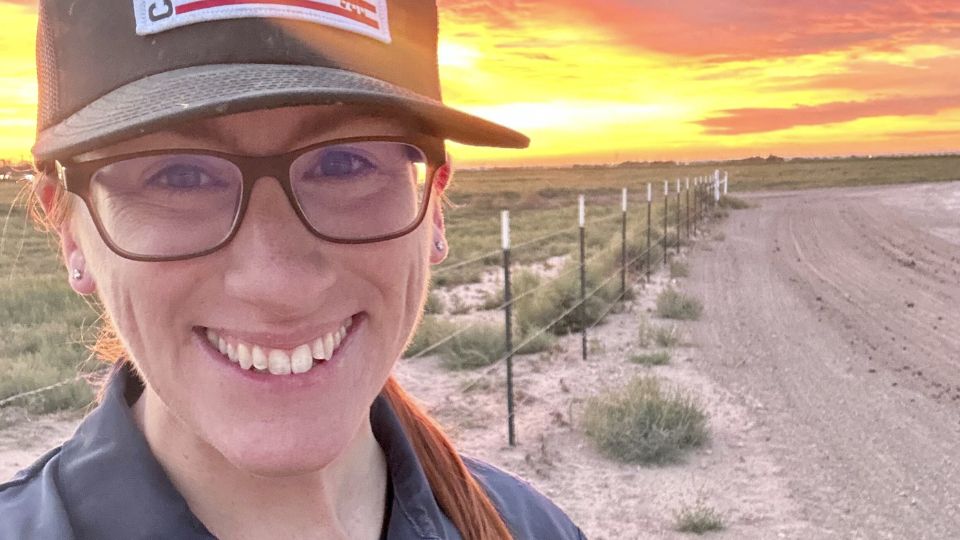Dr. Barb Petersen received her first calls in early March from dairy owners in Texas who were concerned about birds, such as crows, pigeons, and other species, dying on their farms. Then it was reported that some barn cats, half of them from one farm, had died suddenly.
Shortly after, the veterinarian in Amarillo started receiving reports of sick cows displaying unusual symptoms, such as high fevers, loss of appetite, and reduced milk production. The results of the tests for common illnesses were negative.
Petersen, who takes care of over 40,000 cows on twelve farms in the Texas Panhandle, gathered samples from cats and cows. He sent these samples to Dr. Drew Magstadt, a friend from college who currently works at the veterinary diagnostic laboratory at Iowa State University.
The samples showed that cattle were infected with a bird flu virus that has not been found in them before. This was the first evidence that the bird flu, also called Type A H5N1, could spread to cows. According to the U.S. Agriculture Department, as of Wednesday, there were 36 U.S. herds that had confirmed infections.
“It was unexpected,” Petersen remembered. “I couldn’t believe it, but only a little.” Petersen noticed that on nearly every farm with sick animals, there were also sick people. “We were regularly monitoring humans,” Petersen said. “I had people who usually never missed work, but they missed work this time.”
According to the U.S. Centers for Disease Control and Prevention, two people in the U.S. have been confirmed to have H5N1. The most recent case is a Texas dairy worker who is connected to the outbreak in cattle. According to Dr. Demetre Daskalakis, a CDC official who specializes in respiratory diseases, around 24 people have been tested and approximately 100 people have been monitored since the virus was discovered in cows.
Also Read: A Jersey Mother Walks Between Her 2-year-old and a Mountain Lion
Daskalakis stated that the CDC has not observed any unusual flu patterns in areas where there are infected cows. However, some experts are questioning whether the reports of sick workers could indicate that more than one person contracted the virus from the animals.
Petersen mentioned that some workers were experiencing symptoms that are similar to those of the flu, such as fever, body aches, and a stuffy nose or congestion. Some people had conjunctivitis, which is eye inflammation. This was found in the Texas dairy worker who was diagnosed with bird flu.
Dr. Gregory Gray, who studies infectious diseases at the University of Texas Medical Branch in Galveston, has been collecting samples from animals and humans on two farms in Texas. He said that workers on farms with confirmed cattle infections have also reported experiencing mild illnesses.
He has had a hard time with his research. Some workers don’t want to be tested. That could be because they don’t have much access to health care or are afraid to share their private health information.
Gray said that without confirmation, it is not known whether the sick workers were infected with the bird flu virus or something unrelated. “They appear to be connected in both time and space, so one could say it’s biologically possible,” Gray said.
Petersen said that some of the workers who became sick sought medical treatment and were given a medication called oseltamivir, which is sold under the brand name Tamiflu.
Also Read: NJ AG Recommends Dropping Case to Ban Smoking at Atlantic City Casinos
CDC spokesman Jason McDonald said that some farm workers who were exposed to infected animals or people were given the medication. According to federal guidelines, state health officials are in charge of assessing and giving treatment.
The Texas Department of State Health Services gave Tamiflu to the person who had H5N1 and their family members. They also provided Tamiflu to two people on another farm who were exposed to infected animals. Chris Van Deusen, a spokesman for the Texas Department of State Health Services, shared this information. He said he wasn’t sure if other people had been offered the antiviral medication.
Dr. Kay Russo, a veterinarian from Colorado who advised Petersen about the outbreak, mentioned that farmers have been reluctant to let health officials onto their land. “This disease is seen as a scarlet letter,” Russo said. “Right now, it is seen in a negative way by many people.” Russo suggested that it would be beneficial to conduct more extensive testing of cattle, people, and milk.
“We cannot know things that we have not measured,” she said. “Regrettably, the horse escaped from the barn and ran away much faster than we could gather ourselves.”
Gray is concerned that a new federal order, which requires testing of all lactating dairy cows that are being moved between states, could make cooperation even more difficult. Labs that perform tests are required to inform the Agriculture Department about any positive results. He said that many farmers might choose not to test, hoping that the outbreak will end before they have to.



Leave a Reply